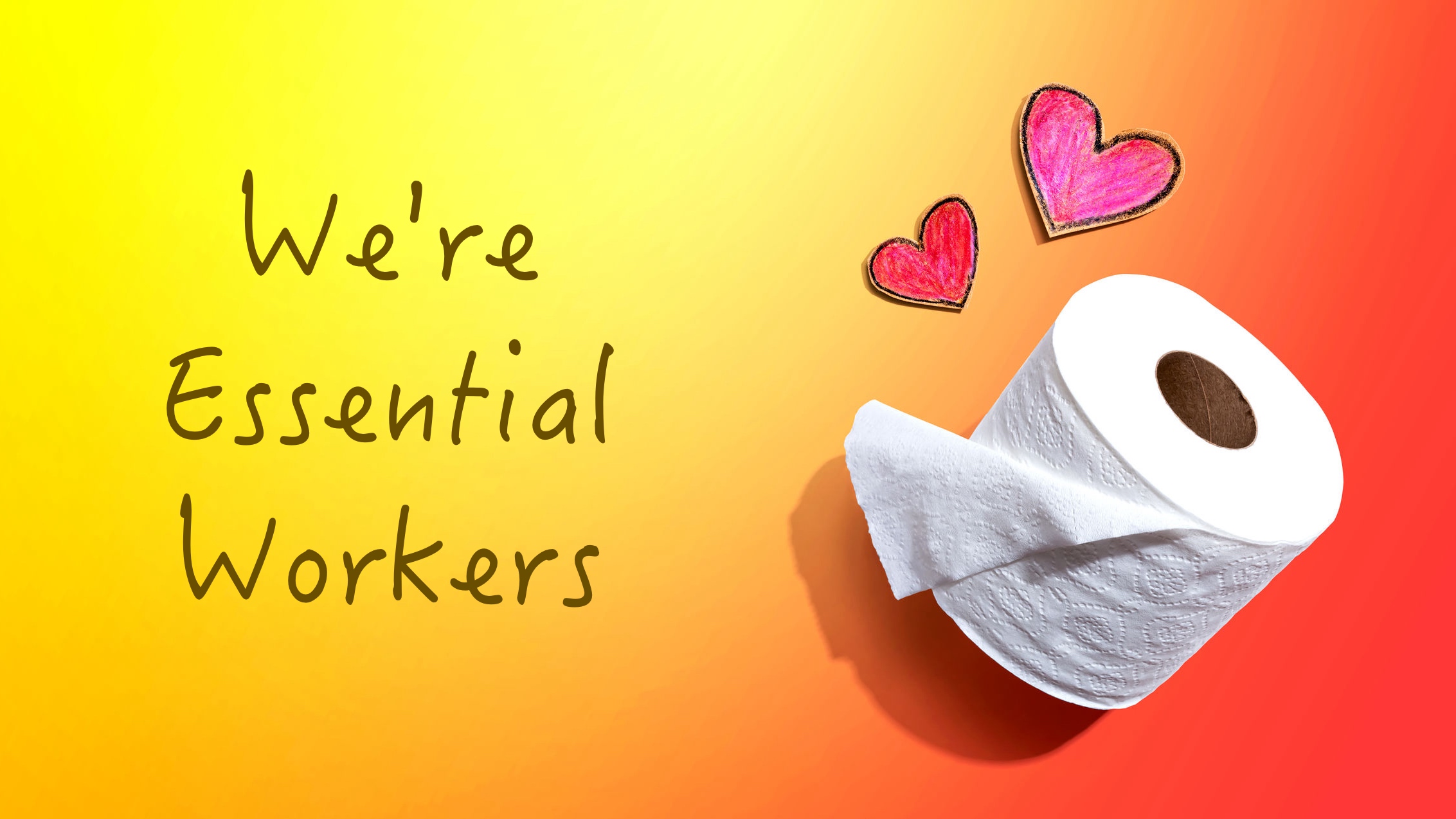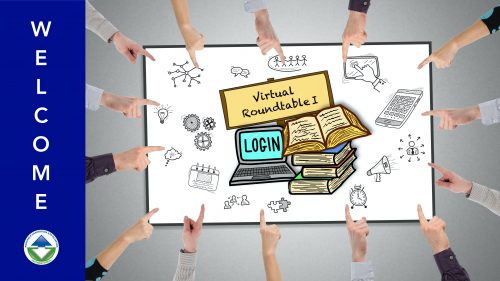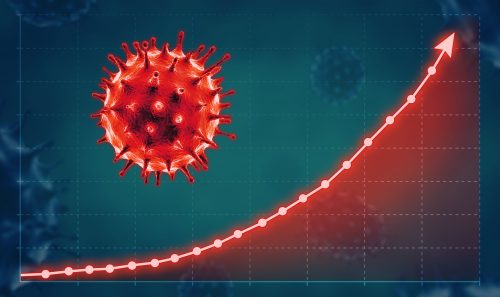COVID-19 Resources
When the COVID-19 pandemic struck in February 2020, the PSAI sprang into action and created a series of resources for our industry. They are updated as new information becomes available.
COVID-19 General Information for Portable Sanitation
 No one knows how long COVID-19 will last or how it will affect public health in the coming years. You should adjust your company operations and demonstrate that you have taken every responsible action you can to protect your workers and the public. At a minimum the PSAI recommends portable sanitation leaders:
No one knows how long COVID-19 will last or how it will affect public health in the coming years. You should adjust your company operations and demonstrate that you have taken every responsible action you can to protect your workers and the public. At a minimum the PSAI recommends portable sanitation leaders:
- Read the information on this page and take the actions that are important for your company
- Review your cleaning products and make sure you are using one of the ingredients listed below that is most likely to be effective on COVID-19. If you are not, take steps immediately to supplement or change your cleaning products.
- Make sure you have the right concentrations to maximize the chance of killing COVID-19. For example, in some pre-mixed commercial cleaning products containing hydrogen peroxide, the substance is present at 1.5% which should be more than adequate for these purposes. If you choose to mix your own cleaning products, do your research before mixing. Looking at hydrogen peroxide, this liquid comes in various strengths – basic household strength is 3%, food grade is 35%. Make sure you know how to mix it properly and safely. Here is a resource on how to do that if you choose hydrogen peroxide. Similar guides are available online for other substances. You should also consult the SDS and train your staff for any chemical you use in your operation.
- Educate your team about COVID-19 and make sure they know what to do if they (a) feel sick, and (b) know they have been exposed to someone who has COVID-19.
- Make sure your staff are using precautions and wearing proper PPE to protect themselves. COVID-19 is mostly transmitted through airborne droplets. Be sure you have the PPE you need and take steps to address shortages. Further information is available on this page.
- Update your Exposure Control Plan if you have not already done so this year. Information about this is on the OSHA website and here from the PSAI
- Consult with your suppliers to learn where you might have any supply chain vulnerabilities. Right now the market is reacting to fears that supply chain disruptions will affect sales and production. Where are yours? What will happen if your favorite products are not available for a while due to troubles importing or domestic production slowdowns due to worker illnesses? Make a plan, but don’t panic.
- Update your business continuity plan for how you will operate if key staff are too ill to work. You deal with people calling out all the time, but what if it is in larger numbers than you’ve ever experienced? Have those discussions and make your plan proactively so you don’t have to figure it out on the fly.
- Note that OSHA has issued guidance concerning how to prepare work sites for COVID-19. This guidance does not change standards or regulations, and it creates no new legal obligations. However, it does recommend that workers on sites away from sewered facilities have access to hand sanitizer. This is not substantially different than requirements for hand washing that have already been in place through OSHA regulations (see below).
OSHA Standards Have Always Required Hand Washing Stations
Editable Template – COVID-19 Prevention and Response Plan for Customers
New OSHA Requirements for Portable Sanitation
COVID-19 Guidelines for Portable Sanitation – published by the PSAI for decision-makers and users
General COVID-19 Vaccine Information
Essential Workers Classification for Vaccine Priority.
Note that portable sanitation workers generally fall into category 1-c, though in certain instances a case can be made for category 1-b. Contact the PSAI if your company is serving healthcare environments and other customers that place your workers at higher risk, and we will try to assist you. Also review this recording regarding how vaccine distribution works and how you can work with resources in your area to get your employees vaccinated.
Cleaning/PPE Information

We know now that the greatest danger of transmission is through airborne particles, but be aware that COVID-19 also survives on surfaces. Be sure to clean them properly.
- Cleaning solutions including hydrogen peroxide (0.5% concentration), ethanol (62-71% concentration), and sodium hypochlorite – a chemical found in bleach (0.1% concentration) are the most effective at killing these viruses.
- As always, portable sanitation personnel should be wearing PPE when servicing equipment.
- Educate your team about COVID-19 and review your cleaning procedures with your service personnel. Your cleaners won’t kill anything if they aren’t used properly.
-
Note that the cleaners above need to be on a surface for 1 minute in order to kill the virus.
General Cleaning Procedures Anytime
Cleaning Products and Ingredients that are Effective Against COVID-19
Infection Potential, Cleaning Products and PPE
COVID-19 Transmission through Fecal Matter/Precautions for Safeguarding Personnel
Sample Letter to Customers Concerning Cleaning, Equipment and Supply Theft
The Truth about Masks: Government Seizures, Short Supply, and Portable Sanitation
Accessing or Making Useful Supplies

FDA Policy for Temporary Compounding of Hand Sanitizer
How Make Hand Sanitizer (WHO Fact Sheet)
Masks
According to the CDC, in settings where face masks are needed for PPE but are not available, homemade masks should be used as a last resort. However, homemade masks are not considered PPE, since their capability to protect against COVID-19 is unknown. Caution should be exercised when considering this option. In PPE situations, homemade masks should ideally be used in combination with a face shield that covers the entire front (that extends to the chin or below) and sides of the face.
- Reusing Masks: Do’s and Don’ts
- Best Materials for Making DIY Face Masks
- Detailed sewing instructions with pictures
- Video demonstration on making homemade masks
- Surgeon General demonstration – no sewing. You can supplement the effectiveness of this mask by putting a folder paper towel or coffee filter in the middle of the cloth folds
Whether masks should be worn by the general public is a topic that continues to evolve. We now know that the virus travels in the air just from regular breathing by an infected person. They do not have to cough or sneeze to expel the virus into the air.
At the beginning of the pandemic, the WHO and CDC were reluctant to recommend the general public should wear masks because they felt the science was not conclusive and also because they were worried that public demand for masks would make the situation for healthcare workers even more dire. However, countries where the public has worn masks have seen a slower spread of COVID-19 and opinions are changing. Now the US government recommends wearing some sort of face covering when you are out in public, especially if it will be difficult to maintain 6 feet of distance between yourself and others. Please note:
- Homemade masks will likely NOT protect the wearer to any great extent.
- These masks WILL protect the people around the wearer from breathing in the virus expelled through breathing, sneezing, or coughing.
- Masks are intended to complement the 6-foot social distancing guideline, not replace it.
Business Continuity
 COVID-19 Business Planning Checklist
COVID-19 Business Planning Checklist
Developing a Business Continuity Plan – General
Adjusting for a Business Slowdown
Key Provisions of the CARES Act
Key Provisions of the Consolidated Appropriations Act
Human Resources
Society for Human Resource Management COVID-19 Resources
Fisher Phillips Attorneys COVID-19 FAQs
What You Need to Know about Remote Workers
Summary of the Families First Coronavirus Response Act
Should Your Company Provide Hazard Pay?
Fillable Return to Work Plan Template
COVID-19 Testing and the Portable Sanitation Industry
See vaccine information in the general section at the top of the page.
Insurance Facts and Considerations
 Many business leaders have questions regarding insurance coverage and risks during the COVID-19 emergency.
Many business leaders have questions regarding insurance coverage and risks during the COVID-19 emergency.
This resource from Heffernan Insurance Brokers offers good general guidance on insurance issues related to COVID-19, and we thank them for providing it.
Please note: The PSAI does not endorse providers of any goods or services.
Essential Services and Restrictions
 US Government List of Essential Services
US Government List of Essential Services
List of Essential Services – Ontario
PSAI Letter for Drivers to Carry Regarding Essential Services
Roundtables on COVID-19

How to Participate in a Virtual Roundtable
Video: COVID-19 Virtual Roundtable I, March 19, 2020
- Outlook for the duration of the epidemic
- Critical supplies timeline (sanitizer, hand wash units, etc)
- Insurance coverage issues
- Open discussion: status of operations in the COVID-19 reality
Video: COVID-19 Virtual Roundtable II, March 26, 2020
- Update on the spread of the epidemic
- Families First Coronavirus Response Act and other legislative changes
- Supply shortages update
- Handling customers requests for temporary halts in service
- Strategies for dealing with cancelled special events
- Open discussion, updates from around the country, and follow up on topics raised in the prior session
Video: COVID-19 Virtual Roundtable III, April 2, 2020
- Most likely epidemic scenarios and implications for portable sanitation businesses over the next 18 months
- New information on how COVID-19 spreads and implications for your workers
- Global PPE supply update
- CARES Act
- Planning for when your team member(s) get sick with COVID-19
- Hand washing standards and options for meeting the need while supplies are short
- Open discussion, updates from around the country, and follow up on topics raised in prior discussions
Video: COVID-19 Virtual Roundtable IV, April 9, 2020
- Conditions for returning to “normal” activity in a community
- Universal precautions for portable sanitation in the time of COVID-19
- Contracting for special events pre- and post-COVID-19
- Approaching pricing strategy in the COVID-19 environment
- Decision factors in the purchase of new equipment during uncertain business times
- Open discussion and updates
Video: COVID-19 Virtual Roundtable V, April 16, 2020
- The realities of vaccine timelines
- New COVID-19 related tools for businesses
- Managing risk while hiring, onboarding and training new staff
- Supply chain updates: when to expect availability of key items and where to find things that are available
- How teams are coping around the country
- Outlook for winterizing hand wash sinks
- Open discussion and updates
Video: COVID-19 Virtual Roundtable VI, April 23, 2020
- The plan for “Reopening America” and what it means for portable sanitation
- Meeting the needs of job sites as COVID-19 progresses
- Managing your supply chain
- Preparing your business for workers returning to the office
- Open discussion and updates
Video: COVID-19 Virtual Roundtable VII, April 30, 2020
- How portable sanitation companies will create a “new normal” for their operations
- Update on transmission of COVID-19 through feces
- Adjusting routes for twice a week service
- Municipalities buying their own hand washing equipment: how should operators respond?
- Preparations and liability considerations for bringing people back to work at the office
- Open discussion and updates
Video: COVID-19 Virtual Roundtable VIII, May 7, 2020
- Update on the pandemic and key portable sanitation issues from CDC, FEMA, and OSHA
- Hand hygiene: managing sanitizer, sinks, soaps, and paper product supply chain issues
- Special events in the days of COVID-19: preparing your business
- Employee safety issues: Mask reuse, employee protocols, what do to as workers reduce their vigilance
Video: COVID-19 Virtual Roundtable IX, May 14, 2020
- What we can learn from the 1918-19 flu pandemic about what to expect this time and life afterward
- Getting parts for sinks and other hard-to-find equipment
- A group of high level event planners’ new publication on re-opening large events and the implications for portable sanitation
- Opportunities in the portable restroom trailer business during COVID-19
- Open discussion and updates
Video: COVID-19 Virtual Roundtable X, May 21, 2020
- Update on the impact of the pandemic on portable sanitation
- How vaccine development will and won’t affect your workforce
- CDC/FEMA updates affecting portable sanitation
- The emerging picture for special events in the age of COVID-19
- Adjusting your job site practices and planning for the future: equipment, service, communication
- Supply chain update from suppliers
- Open discussion
Video: COVID-19 Virtual Roundtable XI, May 28, 2020
- Preparing for the second wave of COVID-19
- The latest on COVID-19 transmission via fecal matter and surfaces
- FEMA guidance on hurricane/disaster prep in the age of COVID-19
- Is it price gouging?
- Chemical (re)labeling dos and don’ts
Video: COVID-19 Virtual Roundtable XII, June 4, 2020
- General portable sanitation updates: curfews, vaccines, PPE forecast
- New opportunities for portable sanitation businesses
- Issues to address when customers ask to be listed as an additional insured
Beginning in mid-June 2020, the PSAI diversified its frequent roundtables to include other topics relevant to portable sanitation in addition to COVID-19. Recordings of these sessions are available free to PSAI members.
Information about Managing the Epidemic

Imperial College Report Depicting Likely Scenarios Before a Vaccine is Introduced
US Government COVID-19 Response Plan
National Coronavirus Response: A Roadmap to Recovering
White House Plan for Reopening America
COVID-19 Pandemic Operational Guidance for the 2020 Hurricane Season









